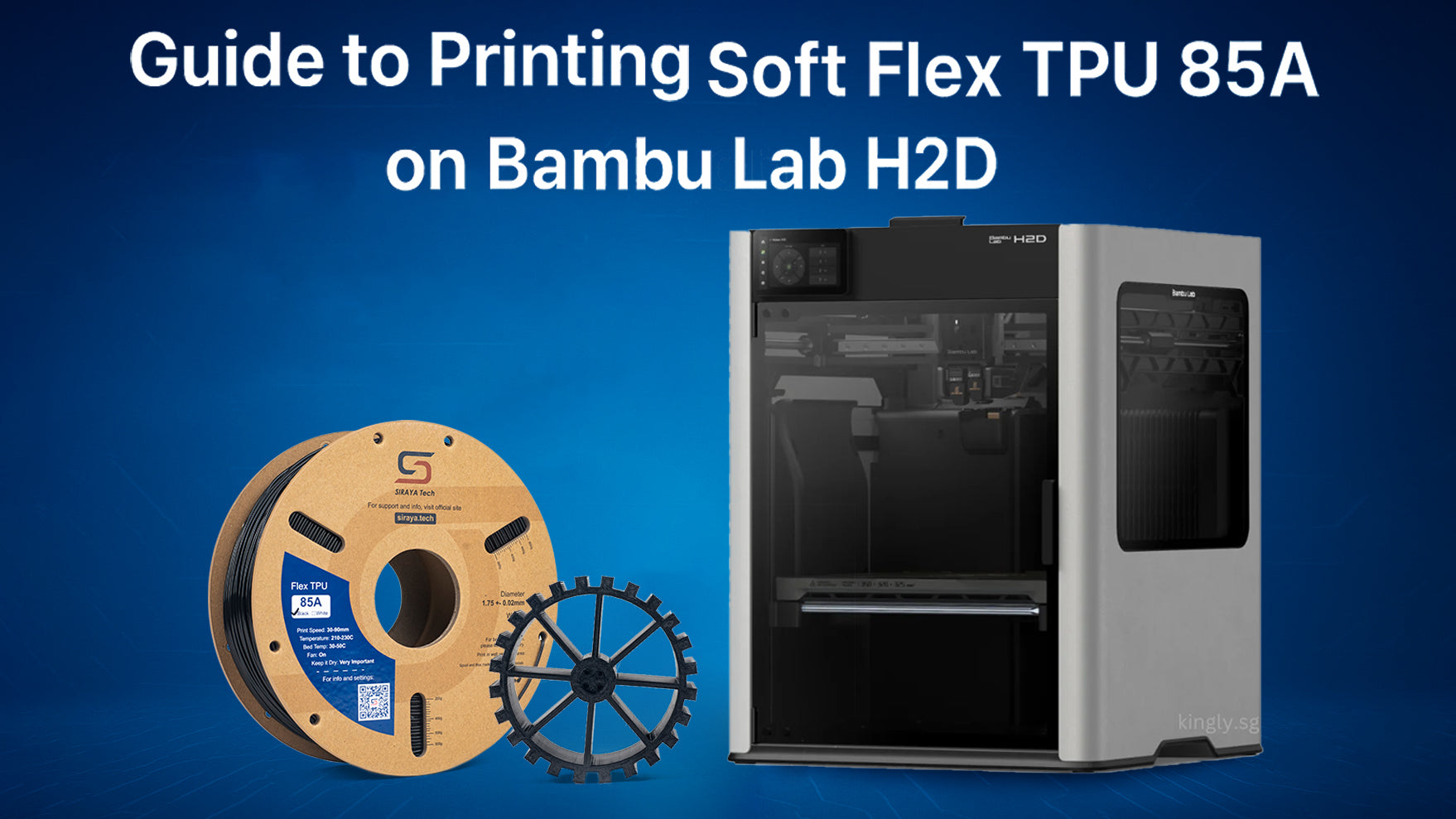What is Flex TPU 85A and 95A?
TPU (Thermoplastic Polyurethane) is a flexible, rubber-like 3D printing material known for its excellent elasticity, wear resistance, and durability. Siraya Tech Flex TPU 85A and 95A is a soft version with a Shore hardness A, ideal for applications like:
-
Gaskets and seals
-
Phone cases
-
Wearable accessories
-
Vibration dampeners
It’s especially suitable for parts requiring extreme flexibility and resilience.
85A/95A TPU vs Hardness D TPU: Why is Hardness A TPU More Difficult to Print?
While 85A and 95A TPU may sound similar, they behave very differently during printing.
|
Property
|
TPU 85A/95A
|
Hardness D TPU
|
|
Shore Hardness
|
softer Hardness A
|
firmer Hardness D
|
|
Flexibility
|
Much more flexible
|
More rigid and easier to feed
|
|
Bowden Tube Compatibility
|
Poor – easily buckles
|
Better – retains stiffness
|
|
Extrusion Stability
|
Requires direct feeding
|
Compatible with Bowden or direct
|
Key Insight:
Although 85A and 95A only sounds slightly softer than hardness D TPU, in real-world printing, Hardness A TPU is much more flexible, making it more prone to filament buckling or jamming—especially through Bowden tubes, where the material lacks structural integrity to be reliably pushed.
 Best Practice to Print Soft TPU on Bambu Lab H2D
Best Practice to Print Soft TPU on Bambu Lab H2D
To ensure consistent extrusion and eliminate filament jams, follow these steps:
1. Remove the Bowden Tube
The Bowden setup increases the chance of feeding failure. Detach the Bowden tube between the filament outlet and the extruder.
2. Top-Feed the Filament
Mount the TPU spool directly above the extruder on your printer. This minimizes resistance and enables gravity-assisted feeding.
3. Feed TPU Directly into the Extruder
Load the filament straight into the extruder without the Bowden tube. This direct drive setup provides smoother and more reliable feeding, even with extremely soft filaments.
To make your printing even easier, we’ve created optimized profiles for each popular Bambu Lab model. Click the links below to download:
Need more materials? Explore all filament profiles on our official site:
Final Tips
-
Dry TPU before printing to prevent bubbles or under-extrusion.
-
Start at a slow print speed.
-
Keep retraction low or disabled to avoid clogging.
-
Enable minimal cooling for best layer adhesion.
By using the correct feed method and setup, printing soft 85A TPU becomes as reliable.

